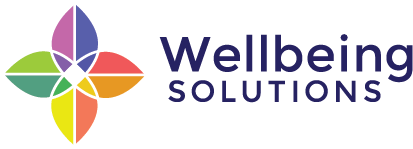Energy Management is Key to Productivity, Health, and Happiness
The dedication and care that high-performing professionals give their work is admirable. Commitment to a career that confers a deep sense of purpose can be both a blessing and, if not balanced, a curse. The Gallup Wellbeing Index measures purpose as one of five key indicators of wellbeing. However, when work is performed in a way that doesn’t include periods of renewal it can, and often does, lead to burnout.
The added complexities of COVID era life—increased workloads, concerns about the future, more time online, less time interacting with colleagues, and fewer boundaries between work and home life—have added new layers of stress. Despite this, new opportunities are also inherent to this new era and new way of working.
Spending more time working from home allows creation of structure that’s better suited to enhanced wellbeing. Creating ways of working that feel fluid and energizing also increases creativity, productivity, and satisfaction with life. This approach may seem counterintuitive – but it works!
The mindset of most hardworking professionals is: when work piles up, work harder and push more. However, pushing through work all day without taking breaks leads to decreased energy and LESS productivity, not more. It also leads to poorer health and irritability, and adversely impacts relationships.
Understanding how to manage energy and live in a way that optimizes the natural circadian and ultradian rhythms that affect all humans, we can greatly improve productivity, health, and happiness. We each have an internal energy system based on a self-sustaining timing system: the circadian clock. We’re also affected by more subtle timing systems called ‘ultradian rhythms’. Circadian and ultradian rhythms impact energy, hormone levels, body temperatures, movement, mood, and metabolism.
When we work against these rhythms, instead of with them, we don’t function as well. As a health and wellness coach, I’ve helped many clients learn to recognize their energy patterns to live and work in ways that feel good and are sustainable.
To improve energy and productivity, we want to think about establishing a flow-like state that’s aligned with the ultradian rhythm unique to you. Ultradian rhythms are shorter patterns defined as a period of activity (i.e., work) followed by a period of restoration. One work/rest cycle of the rhythm lasts 80–120 minutes, a cycle that repeats day and night.
Knowing this is how humans are naturally designed, work periods can be optimized for higher creativity and function, when we intersperse them with renewal in the form of energy input. The length of time we can stay highly focused before our energy drops is unique to each of us, but for most it’s somewhere between 50 and 90 minutes.
Establishing a work pattern that includes focused periods alternating with energy-enhancing renewal periods is key for maintaining flow throughout the day. When we use this information to inform how we work, and take breaks throughout the day, we feel better energetically and are more creative and productive.
Key aspects of this approach include that renewal periods need not be long, and that the primary ways in which we take in energy are through our breath, senses, and food. Being intentional and strategic about creating a balance of energy input and energy output contributes to our ability to give more fully to the work about which we’re so passionate, and prevents us from burning out. It allows us to bring more, not less, to the people we serve and the work about which we care deeply.
If you’re curious to learn more, schedule a complimentary introductory coaching session with me.
